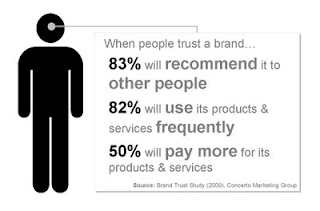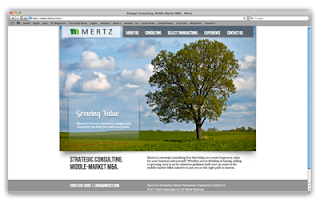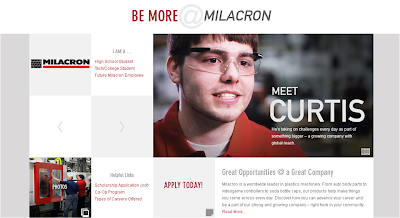- Kick
it off. Sit
down with the team to explore target customers’ situations and hot-button
issues, as well as the sales team’s current use of marketing messages and
materials. Find areas of improvement or confusion.
- Develop
messaging. Apply
key elements of the brand to craft specific messaging that meets sales’
unique challenges. Fill in missing pieces and ensure consistency across
all messaging.
- Deploy
it. Review
new messages with the staff and practice use in common sales scenarios.
- Follow
up. Review
successful sales interactions that leveraged the messaging and address
evolving issues.
Monday, November 26, 2012
4 Steps to a Better Sales & Marketing Relationship
Tuesday, October 23, 2012
Integrate to Elevate – How to Get More from Your Digital Investments
However, to take full advantage of what’s possible online, it pays to have a good plan. In an earlier post, we highlighted three keys to integrated digital marketing. Now, let’s take a quick look at how a few of today’s best online marketing elements can enhance your integrated strategy.
Web Video
There’s little doubt about the engagement power of video. Consider the ongoing, explosive growth of online video viewing on mobile devices, laptops, TVs and more.
Photography & Graphics
Get real. Be interesting. Those are perhaps the top two ways you should be connecting with your audiences online.
Friday, October 12, 2012
Crisis Communications Lessons from the Sikh Temple Shooting
Expect the Unexpected
- Use all available resources and make it a team effort – You can’t handle it all on your own.
- Make sure contact info is current, including emergency phone chains.
- Consider a news conference to reduce the constant demands on individuals.
- Keep internal leaders up to date.
- Media training is absolutely critical.
Thursday, August 23, 2012
Improve Your Email Open Rate with these Dos and Don’ts
First
up - The Subject Line
The
Main Attraction - The Body Copy
Thursday, August 9, 2012
Turn the Skills Gap into a Competitive Edge
- A careers website
- Media relations
- Social media engagement
- Special events
- Public-private partnerships
 |
| Case Study (PDF): How a comprehensive program can support HR recruiting efforts |
Thursday, August 2, 2012
3 Keys to Integrated Digital Marketing
Boil it down to these three essential tasks:
1. Take a comprehensive approach. Review your goals for
the year and determine which online channels will help you achieve those goals.
2. For each online channel, develop a set of
communication goals, strategies and tracking tailored for the medium.
3. Make your website the hub for all your efforts, defining
how each of the other channels fits in that framework.
Here’s an example of how it can work. You
pick a social media platform where you can reach your target audience. And via
that social media platform, you continuously promote relevant content that’s
hosted on your website. Your social media strategy should consider short-term
goals and of-the-moment issues to increase engagement, while also allowing for
the long-term, brand-building approach supported on your website.
Done right, an integrated approach creates a deeper brand experience and brings more and better sales leads to your company. In a future post, we’ll talk more about how to do that, exploring various forms of online media content and how they relate to an integrated digital marketing strategy.
Wednesday, July 18, 2012
You There – You Don’t Know Everything
When you recognize the unknown, you ask questions. And asking questions illuminates answers.
For example, ever heard of the Five Whys? It’s a technique originated by Toyota in which you get to the root of a problem by asking "why" five times. Watch a good Five Whys primer from Harvard Business Review below.
- Launching a product
- Considering a brand extension
- Starting an ad campaign
- Entering a new market
- Going after new customers
Wednesday, July 11, 2012
To Hire a Millennial, Think Like a Millennial
- Flexibility. You have the opportunity to shape an individual to be the best fit for your company.
- Youthful perspective. Millennials bring fervor and excitement to client engagements, meetings and projects.
- Innovation. This is the most educated and technology-savvy generation. They bring fresh ideas, creative thinking and the ability to see things differently.
- Social - This generation is showing up as totally aware of work-life balance. They value spending time with family and friends doing things they enjoy. They want a fun work environment.
- Team oriented – A recent survey of Millennial professionals, conducted by Robert Half International and Yahoo! Hot Jobs, found that over 60% of Millennials want to hear from their managers at least once a day.
- Achievement oriented – Praise is something this group is accustomed to, show that you value your employees and are invested in their individual and group success.
- Flexible – Technology has opened new doors and more opportunities – Millennials expect convenience. Find a way to incorporate this into your program.
Wednesday, June 13, 2012
Got Skills? How to Become a Winner in Today’s Competitive Talent Search.
- Understand what characteristics define your company – Involve everyone from your CEO to your customers and vendors to really delve into what is important. Once you know, market it.
- Become a thought leader – through articles, speaking engagements and events. When prospective employees Google you, give them plenty of reading material that showcases the innovation, knowledge, and involvement of your company.
- Update your recruiting – Word of mouth isn’t enough anymore. People spend so much time online that it’s critical to develop a digital presence. Develop a careers page, partner with technical colleges and join social media.
- Support government and community hiring initiatives – prospective employees want to be a part of something bigger, see what you can do to help programs, such as Dream It, Do It, in your area.
Waiting for talent to seek you out is no longer adequate - Manpower Group recently released the results of its seventh-annual Talent Shortage Survey, revealing 49 percent of U.S. employers are experiencing difficulty filling mission-critical positions within their organizations.
Monday, June 11, 2012
What Are You Doing After the Show?
 For example,
NPE exhibitor Milacron is extending the impact of its investment with a post-show landing page. An
email campaign and other vehicles are driving traffic to the site, where
visitors can explore photos, videos, news coverage, machine specs and more. The
page, adapted from a preshow promotional site, is proving to be a
cost-effective way to keep the show’s positive vibes going.
For example,
NPE exhibitor Milacron is extending the impact of its investment with a post-show landing page. An
email campaign and other vehicles are driving traffic to the site, where
visitors can explore photos, videos, news coverage, machine specs and more. The
page, adapted from a preshow promotional site, is proving to be a
cost-effective way to keep the show’s positive vibes going.Wednesday, May 16, 2012
On Finding Our TrueCenter™
Monday, April 30, 2012
Boosting Consumer Confidence in Interest-Based Advertising
- Learn about the program by reading the principles, and find out more about the participating associations. To learn how your company can implement the principles, review the Implementation Guides.
- Register to start using the Advertising
Option Icon as a
means for providing enhanced notice of online behavioral advertising
practices. To register to use the icon, click here.
- Inform consumers about data practices through clear, meaningful and prominent notices.
- Register to receive information about how to be listed on the Consumer Opt-Out Page, where consumers will be able to easily opt out of receiving online behavioral advertising from some or all participating companies.
- Report a complaint if you believe that you have witnessed a practice or ad that may violate the Principles. You can report the incident to either the Council of Better Business Bureaus (CBBB) or the Direct Marketing Association (DMA). Complaints may be filed by consumers, business entities or other stakeholders.
Tuesday, April 17, 2012
How Tapping into Emotions Plays a Larger Role in Building Brand Trust

Thursday, April 5, 2012
To Lead Your Way to a Stronger Network, Start Here
 So, you have a vision. You’re ready to “be the change you want to see in the world” (or in your community, industry or organization). You have aspirations of becoming a change catalyst and want to be viewed as a thought leader.
So, you have a vision. You’re ready to “be the change you want to see in the world” (or in your community, industry or organization). You have aspirations of becoming a change catalyst and want to be viewed as a thought leader.But where do you start? Who will support your vision? And where can you find these like-minded and equally inspired allies?
Earlier this week, Mary Scheibel presented on the topic of leadership at the Central States Water Environment Association (CSWEA) 2nd Annual Young Professionals Leadership Academy. Her presentation “Taking Your Network to the Next Level,” looked at how to build a supportive, reliable network by first demonstrating your leadership aptitude.
Everyone has to start somewhere, and a leader is no different. Find a cause, organization or an association that’s important to you. Then, figure out where you can make an impact, offer to lead an initiative or program, roll up your sleeves and help get the work done.
The benefits are numerous. You’ll make good things happen. You’ll develop a new or sharpened focus for your career and maybe even your life. You’ll gain emotional fortitude and build character. And in the process, you’ll diversify your network, establishing relationships with business and community leaders you otherwise wouldn’t have met.
Excellence starts with leaders of good character who engage in the entire process of leadership. Exhibit attributes of a values-driven leader – ethical, courageous, conscientious and aspiring. Build your value as a leader and watch your network expand and strengthen.
Discover other key success factors in taking your network to the next level by viewing the presentation slides.
Monday, April 2, 2012
Rethinking the Stock Answer for Photography

The heroic handshake. The people in suits jumping for joy. The meeting room full of diverse employees.
I’m sure you have your own examples of stock photography clichés. Of course, there are reasons why stock images are so popular. They’re fast. They’re easy. They’re affordable.
Problem is, certain types of stock photos have become way too common. That’s not to say there aren’t lots of great stock images around. You just have to work harder to present the images in a fresh way and make sure they’re relevant and meaningful to your audience. (Here’s some good use of stock photography, for example.)
Or, if you have the right opportunity and resources, and you really want to stand out and show what’s special about your company, it may be time once again to consider original photography in some instances – your website and your brand collateral, perhaps.
Yes, it’s a significant investment. Yes, it takes more time and effort. But here are just three reasons why it may be worth the trouble:
- Personality. Pictures of the real people in your real organization show who you really are – much better than images of nameless guys and gals with call-center headsets ever could.
- Professionalism. High-quality original photos convey a strong company and a respect for your audiences, who don’t have to see those same old, arms-folded executive teams.
- Relevance. You can set up your images to support your message and brand, instead of scouring iStock for a standard image that’s only marginally related.
Some of the advantages of original photography are on display at www.lubar.com and www.mertz.com (above right), two award-winning sites we’ve developed recently for clients.
So please, don’t force us to look at another generic close-up of fingers on a keyboard. Give your stock images some more thought, or give original photography a shot in your next marketing communications vehicle.
Tuesday, February 14, 2012
7 Essential Attributes of Successful Email Campaigns
Tuesday, January 24, 2012
Case Study: 5 Things to Learn from Milacron’s Talent Acquisition Campaign

The statistics are in, and they’re good. After only six days live, Milacron’s new recruitment website has had 883 unique visitors, more than 4,011 page views and 260 people who filled out forms requesting employment opportunities.
Like many manufacturers, Milacron, a worldwide leader in plastics machinery, was experiencing a workforce shortage and needed help in attracting talent. The initial success of their new microsite is both a testament to the ability of a well-designed website to attract prospective employees and to the fact that there are people looking for manufacturing jobs.
In November, we wrote about 5 ways that manufacturers can address their workforce shortage. We have since been working with Milacron and other clients to put these ideas in actions.
Here are 5 key takeaways from the Milacron Talent Acquisition campaign:
1. Integrate the program: The initial launch of the microsite would not have been as successful had it not been surrounded by a strategic, multi-faceted program. The campaign encompasses social media presence including Facebook and Twitter, as well as public relations securing both local and trade publication coverage. The company is also fostering relationships with local technical and vocational schools, offering both a co-op program and a scholarship program and promoting Milacron as a good choice for job shadowing, apprenticeship and eventually permanent employment.
2. Base the execution in research: Before designing and executing the campaign, interviews were conducted with current employees at Milacron to understand what was important to the young people in the organization – what they valued about working at Milacron. These interviews were coupled with background research into Millennials to better understand what this generation responds to and cares about. The research informed the employment brand and position as well as the development of the microsite and the surrounding marketing program.
3. Include video: Video is a medium increasingly preferred to receive online information and is especially important for reaching younger people. We conducted onsite video and photo shoots featuring young people inside the organization. These videos will continue to be used throughout recruitment efforts.
4. Create an employment brand: Leveraging the research, we developed an employment brand centered on showing prospective employees how they can “Be More at Milacron.” The messaging is woven throughout the microsite and video testimonials and will continue to serve as a foundation to speak to current and prospective employees, students, parents, educators and the marketplace.
5. Build an appealing careers section: The careers sections of many manufacturers’ websites leave a lot to be desired. The section needs to be informative and engaging, helping to familiarize students, teachers, parents and other non-industry individuals with a basic understanding of manufacturing in a way that highlights the long-term, technologically advanced and personally fulfilling career benefits the field can offer. A good careers section should be user friendly with intuitive navigation and be visually appealing to audiences, especially young people.
Tuesday, January 17, 2012
How I See It: State of the Economy 2012
I preface these comments with three qualifications – one, I am typically a “glass-half-full” personality; two, I’m not an economist (I don’t even play one on TV); and three, I’m assuming that there will be neither a Eurozone economic meltdown nor significant instability in the Middle East.
Given that, I see a rosier business environment in 2012 than what the mainstream media seem to be embracing.
· Consumer confidence is positive and rising.
· Unemployment claims and rates are declining.
· Over 200,000 private sector jobs were added in December, of all months.
· Manufacturers report increasing backlogs and plant capacity utilization.
· Banks are competing again for opportunities to finance business growth.
Yes, there are some tricky issues that still need to be addressed. One of them appears to be an imbalance between available workers and the skillsets needed by employers, especially manufacturers. We’ve often discussed manufacturers’ workforce development challenge here. But many worthwhile efforts are attempting to bridge this gap. Second Chance Partners, an alternative education organization that pairs schools and private industry to create manufacturing apprenticeships for students who are struggling in the traditional high school environment, is a notable example.
As 2012 unfolds, I see prudent businesspeople taking advantage of this increasingly favorable environment. They will begin to reinvest for marketing and sales – not only for customers but also for recruiting the skilled employees they desperately need; they will take advantage of very low interest rates to upgrade if not expand their production facilities; and they will make sure that they take extra-special care of their current employees.
